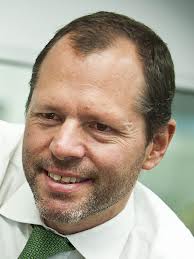The Diamond Producers Association (DPA) has the mammoth task of changing the diamond narrative, according to Jean-Marc Lieberherr, the organization’s chief executive officer. Initially, at least, that mission extends to how the diamond industry engages with millennials, who have become disillusioned with the idea that they’re simply expected to buy diamonds for an engagement or other occasions.
The DPA’s claim is that consumers are looking for real, meaningful experiences and products that are rare in today’s fast-paced lifestyle. “Real is Rare,” its tagline declares, concluding, “Real Is a Diamond.”
But Lieberherr is under no illusions. The DPA recognizes that the industry has lost some of its magic vis-à-vis younger consumers. Millennials, those 18- to-32-year-olds who make up the largest generation in the U.S., don’t have the same reference points for diamonds as previous generations did, he explains in a recent interview with Rapaport News.
“They haven’t been consistently exposed to a diamond-category message,” Lieberherr says, referencing the impact that the generic marketing of De Beers “A Diamond Is Forever” campaign had on previous generations. “It’s therefore important to craft a message that’s relevant to them.”
Price appreciation
The industry’s failure to instill that message since De Beers ended its industry-encompassing campaign over a decade ago has seen diamonds fall behind in the luxury space. As demand consequently stagnated, polished prices softened and margins tightened.
Ultimately, the goal of the DPA’s campaign is to lift polished prices and allow margins to grow, Lieberherr says, asserting that this will empower the industry to restore profitability and invest more in marketing. The DPA hopes to see the direct impact of its campaigns on prices within three years.
To achieve that, it is focusing on raising consumers’ desire for diamonds.
“It’s not just about more people wanting diamonds, it’s about them wanting diamonds more,” he explains. “We’re a supply-constrained industry, so growth will be driven by price. We have to raise consumers’ desire so they’ll be willing to pay more for the product.”
Rebalancing act
For that reason, much of the messaging centers on increasing the perceived value of the diamond, rather than promoting it to a lot more people.
As such, Lieberherr stresses the long-term nature of the campaign: It’s about building the equity of the diamond brand and modernizing the consumer experience, rather than driving short-term sales.
While the industry spends an estimated $1 billion on marketing each year, mostly aimed at driving fourth-quarter sales, such campaigning is not effective if the consumer hasn’t heard from the diamond industry in nine months, he says. Instead, the industry needs to establish an ongoing dialogue with consumers, which retailers and brands can then use as a basis for their own traffic-building campaigns.
With that in mind, “Real is Rare” launched in last year’s third quarter and ended on Black Friday, when retailers typically step up their own advertising.

